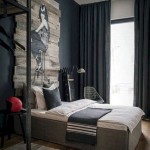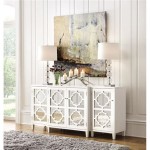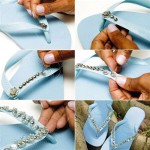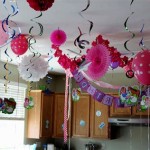How to Decorate a Narrow Shelf
Narrow shelves present a unique decorating challenge. Often relegated to hallways, small bathrooms, or cramped kitchens, they can easily become cluttered and visually unappealing. However, with thoughtful planning and a strategic approach, even the most unassuming narrow shelf can transform into a stylish and functional display area. The key lies in understanding proportion, creating visual interest, and maximizing the available space.
The principles of design apply equally to a narrow shelf as they do to larger spaces. Considering color palettes, textures, and the overall aesthetic goals are crucial. Before beginning, assess the shelf’s location and purpose. Is it intended to be a purely decorative element, or does it need to serve a functional purpose, such as holding books or toiletries? The answer to this question will significantly influence the decorating choices.
The depth of the shelf itself dictates the size of items that can be displayed. Avoid overcrowding, as this can make the space feel even smaller and more chaotic. Opt for items that are scaled appropriately to the shelf's dimensions and consider the surrounding environment. A narrow shelf in a minimalist room will require a different approach compared to one in a more eclectic setting.
Establishing a Focal Point
A focal point is essential for drawing the eye and creating a sense of visual hierarchy on a narrow shelf. This could be a single, striking object, such as a piece of art, a unique vase, or a sculptural element. The focal point should be the largest or most visually interesting item on the shelf, and it should be positioned strategically to command attention.
When selecting a focal point, consider the overall color scheme of the room. Choose an item that complements the existing décor but also stands out enough to serve as a visual anchor. The height of the focal point is also an important consideration. If the shelf is positioned low to the ground, a taller object may be more effective at catching the eye. Conversely, if the shelf is high up, a wider object may be more appropriate.
Once the focal point is established, the remaining items on the shelf should be arranged to complement it. This could involve using smaller objects of varying heights and textures to create visual interest. Avoid placing too many objects of the same size or shape next to each other, as this can create a monotonous and uninspired look. Instead, strive for a dynamic and balanced composition.
Consider creating a vignette around the focal point. Grouping smaller items together can create a sense of unity and cohesion. A vignette might include a small stack of books, a decorative bowl, and a small plant. The key is to ensure that the items in the vignette work together harmoniously and do not detract from the focal point.
Another approach to establishing a focal point is to use lighting. A small spotlight or a strategically placed lamp can draw attention to a particular object on the shelf. This is especially effective for highlighting artwork or sculptural pieces. The lighting should be subtle and not overpowering, and it should complement the overall ambiance of the room.
Utilizing Vertical Space
Vertical space is a valuable asset when decorating a narrow shelf. Since the shelf's depth is limited, maximizing the height can create the illusion of more space and allow for a more dynamic arrangement. This can be achieved through the use of objects of varying heights, such as tall vases, candlesticks, or stacked books.
Books can be a versatile tool for adding height and creating visual interest. Stacking books horizontally can create a platform for displaying smaller objects, while arranging them vertically can add height and depth to the shelf. Consider using books with visually appealing covers or spines to add color and texture to the display.
Plants are another excellent way to utilize vertical space. Trailing plants, such as ivy or pothos, can cascade down the shelf, adding a touch of greenery and softening the edges. Taller plants, such as succulents or cacti, can add height and structure to the arrangement. Choose plants that are appropriate for the lighting conditions and the overall aesthetic of the room.
Mirrors can also be used to create the illusion of more space. A small mirror placed on the shelf can reflect light and make the space feel larger and brighter. Choose a mirror with an interesting frame to add visual interest and complement the other items on the shelf.
Hanging items from the shelf is another creative way to utilize vertical space. Small framed prints or decorative objects can be suspended from hooks or brackets, adding a touch of whimsy and visual interest. Ensure that the hanging items are securely attached and do not obstruct the view of the other items on the shelf.
Balancing Functionality and Aesthetics
While aesthetics are important, it is also crucial to consider functionality when decorating a narrow shelf. If the shelf is located in a high-traffic area, it is important to ensure that the items on the shelf are not easily knocked over or damaged. If the shelf is used for storage, it is important to organize the items in a way that is both visually appealing and practical.
In a bathroom, a narrow shelf can be used to store toiletries such as soap, lotion, and towels. Choose containers that are both functional and aesthetically pleasing. Matching bottles and jars can create a sense of unity and order. Consider using decorative baskets or trays to corral smaller items and prevent clutter.
In a kitchen, a narrow shelf can be used to store spices, cookbooks, or decorative items. Arrange the items in a way that is both visually appealing and easy to access. Consider using clear containers to store spices, allowing one to easily identify the contents. Display cookbooks with visually appealing covers to add color and texture to the shelf.
In a hallway, a narrow shelf can be used to display artwork, photographs, or decorative objects. Choose items that reflect one's personal style and interests. Consider using a mix of framed and unframed artwork to create visual interest. Arrange the items in a way that is both balanced and harmonious.
Regardless of the location, it is important to regularly declutter the shelf and remove any items that are no longer needed or used. This will help to keep the shelf looking organized and visually appealing. Donate items that are in good condition, or repurpose them for other uses.
Ultimately, decorating a narrow shelf is about creating a visually appealing and functional space that reflects one's personal style. By carefully considering proportion, creating visual interest, and maximizing the available space, one can transform even the most unassuming narrow shelf into a stylish and captivating display area.

The Best Shelving Ideas For Small Spaces Decorating White Bookcase Home Decor

Easy Diy Picture Ledge A Great Way To Decorate Narrow Hallway This Is Flexible Alternat Decorating Home Decor Living Room Furniture

How To Style Open Shelves 3 Tips For An Uncluttered Look House By Hoff

How To Style Shelves 6 Ideas Get You Started

Picture Ledge Diy Floating Shelves

How To Decorate Your Shelves The Minimal Style White Interior Shelf Decor Living Room Home Design

How To Style Open Shelves 3 Tips For An Uncluttered Look House By Hoff
Decorating Ideas For Narrow Corridors And Hallways Upcyclist

10 No Fail Rules For Styling Small Floating Shelves Michael Helwig Interiors

20 Shelf Decor Ideas For Every Room In The Home Saffron Marigold
Related Posts







